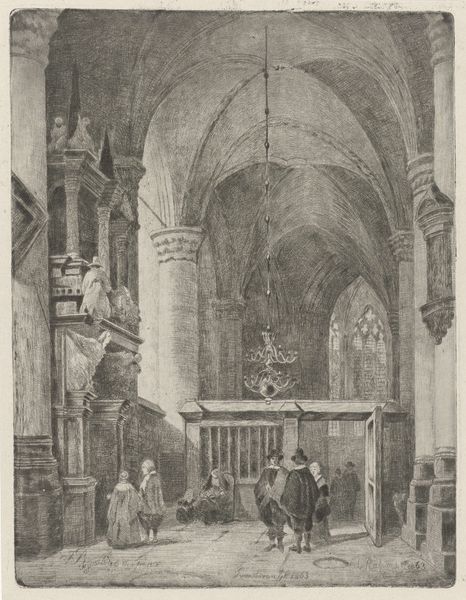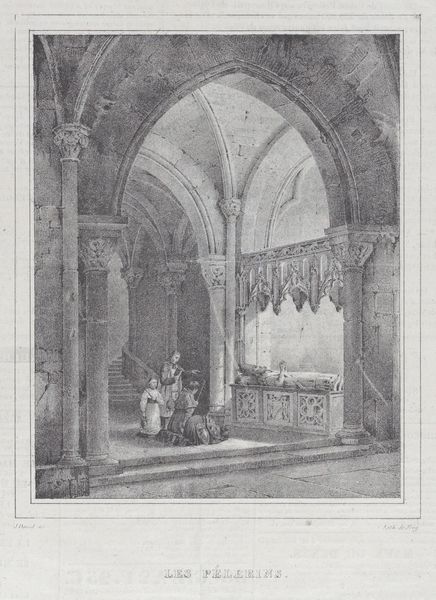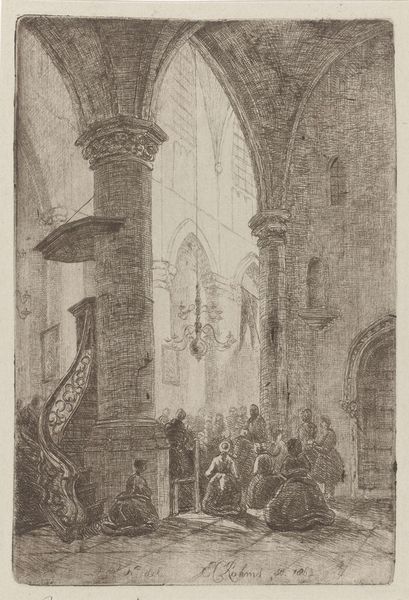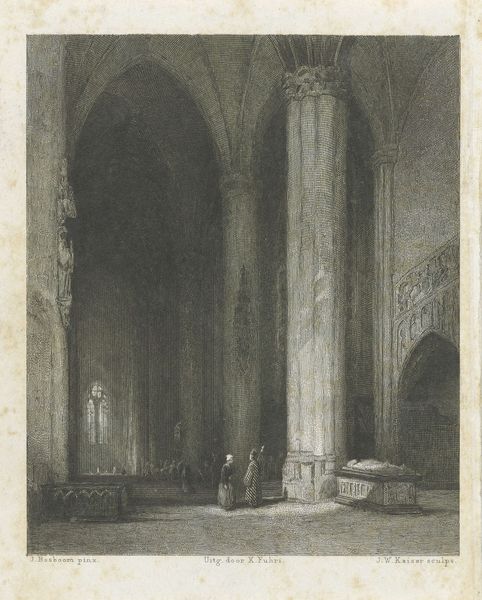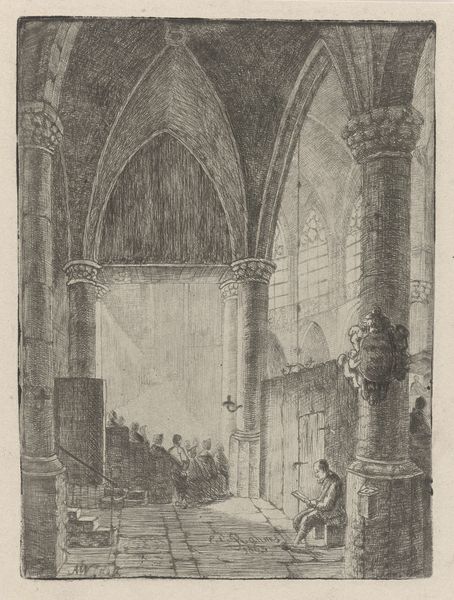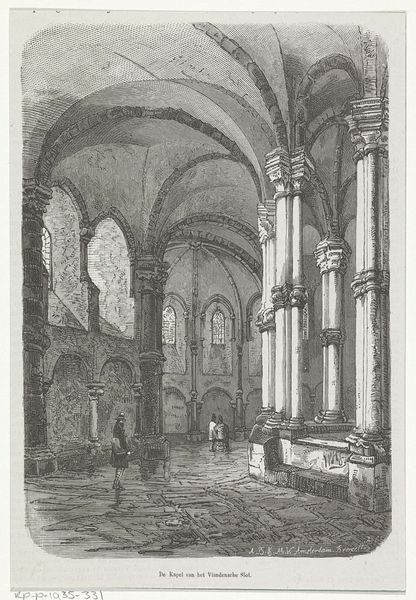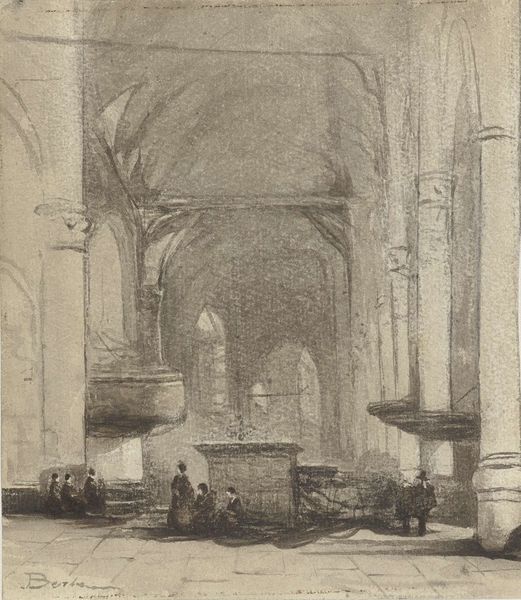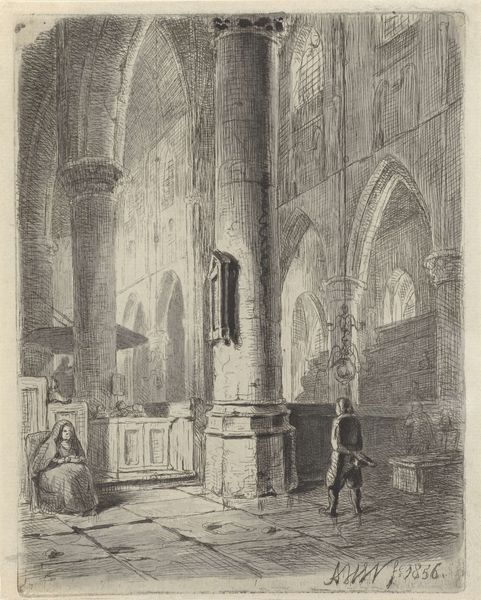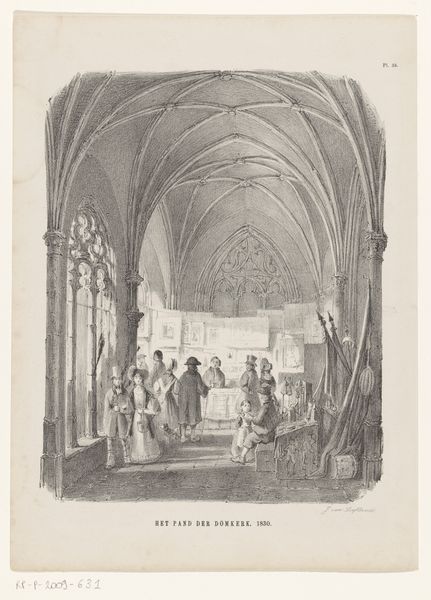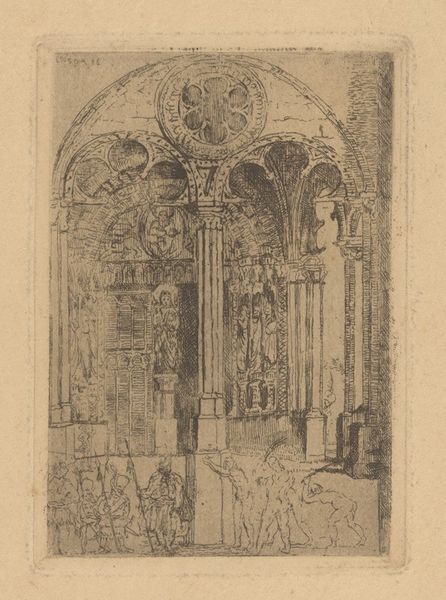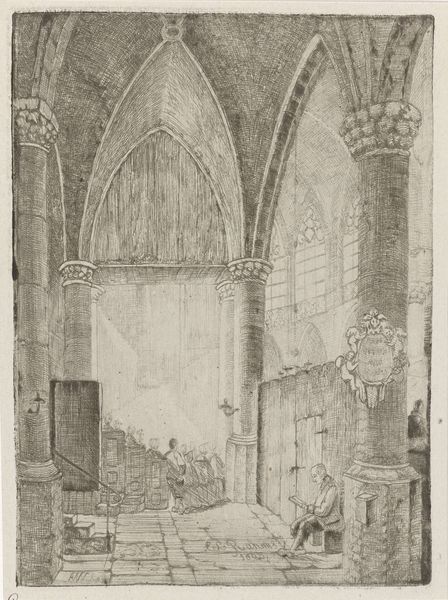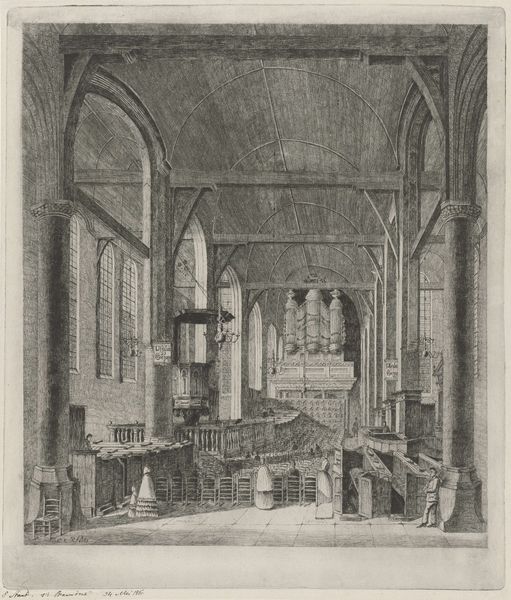
print, engraving
# print
#
landscape
#
genre-painting
#
engraving
#
realism
Dimensions: height 186 mm, width 146 mm
Copyright: Rijks Museum: Open Domain
Curator: This is "Kerkinterieur," or "Church Interior," an engraving by Eberhard Cornelis Rahms, created in 1864. Look closely, and you can appreciate the intricate details he captured in this scene. Editor: Oh, wow. It feels cavernous, almost dreamlike. The light seems to emanate from everywhere and nowhere at once, softening the rigid architecture. A quiet hum captured on paper. Curator: The use of engraving allowed Rahms to achieve a remarkable tonal range. Notice how he creates depth through the meticulous cross-hatching and line work. This wasn't a quick sketch; this was deliberate, time-intensive labour. The cultural context of printmaking—its accessibility versus painting—is also quite telling here. Editor: I'm struck by the figures within. They’re these small pockets of humanity swallowed by the vastness, but somehow they seem connected to the space, you know? Huddling, or pausing…like moths drawn to a faded holy light. And the choice to depict ordinary folk and not a grand ceremony makes it very interesting. Curator: Exactly! It reflects the Realist movement's focus on everyday life, democratizing the subject matter for art. This print becomes a document of its time, illustrating both architectural grandeur and the daily routines of ordinary people within it. Editor: I'm guessing that depicting a church in the 19th century, would be very symbolic to its society? A reflection of beliefs, community, and maybe even a subtle critique? Curator: Precisely. These buildings were, and still are, expressions of societal power and wealth. This scene doesn't shy away from the stark juxtaposition of the sublime and the mundane. The people are literally dwarfed by their environment, the product of many hands. Editor: It’s kind of haunting. Almost makes you feel a bit like an intruder, peering in on a private, echoing moment. The artist uses perspective as a type of filter or portal for us to access that time. Curator: Indeed. And considering that printmaking at this time was an established medium for the distribution of news and information, images such as "Kerkinterieur" served both an aesthetic and informative purpose. The accessibility allowed many more people to view architecture. Editor: Well, looking at it now I understand the historical layers to the engraving and can't deny the labor in Rahms' work! So it does what art should do. Gives space for different eyes to witness a dialogue of art.
Comments
No comments
Be the first to comment and join the conversation on the ultimate creative platform.
